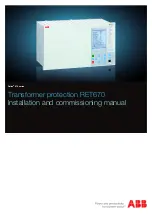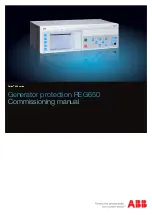
PSEN op4H-SL Series
Operating Manual PSEN op4H-SL Series
1004305-EN-01
14
In accordance with the standard
}
EN ISO 13855
this distance depends on three factors:
}
Response time of the safety light grid
Interval between interruption of the beams and the OSSD’s change to the OFF state
}
Machine's stopping time
Interval between the change of the OSSD to the OFF state and the stopping of the haz-
ardous machine movement (including the reaction time of the connected relay)
}
Approach speed
The speed with which the object to be detected is nearing the hazardous area in mm/s
The general formula for calculating the minimum distance in accordance with
EN ISO 13855 is as follows:
S = K * (t
1
+ t
2
) + C
S
Minimum distance in mm, measured from the start of the protected field to the
danger source
K
Approach speed with which the object to be detected is nearing the hazardous area
in mm/s
K = 1600 mm/s when S > 500 mm
K = 2000 mm/s when S ≤ 500 mm
t
1
Response time of the safety light grid in seconds
Time it takes for the signal at the OSSD output on the safety light grid to change
once a protected field has been violated
t
2
Machine's stopping time in seconds
The time required for the machine to stop after the signal at the OSSD output
changes
C
Additional distance of 128 mm for safety light grids with hand protection
Resolution
The safety light grids may only be used for protected fields in which a detection capability of
24 mm is sufficient.
Protected field perimeters
During planning, ensure sufficient protected field height to secure the danger zone.
The protected field perimeter is defined in
dimensions [
42]
.
Ambient conditions
}
Install the safety light grids in an environment that corresponds to the environmental
data provided in the
Technical details [
43]
.
}
Do not install the safety light grid near particularly intense and/or flashing light sources;
this applies to the receiver in particular.















































